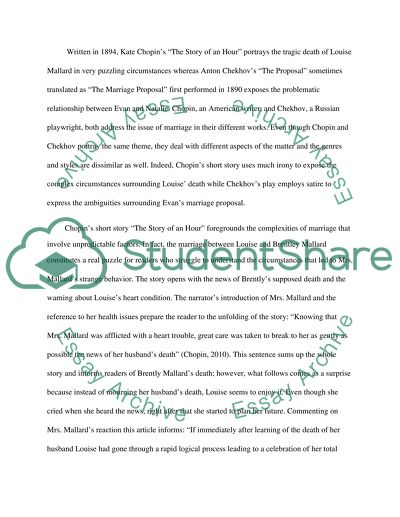Cite this document
(“An analysis of Kate Chopins The Story of an Hour and Anton Chekhovs Essay”, n.d.)
An analysis of Kate Chopins The Story of an Hour and Anton Chekhovs Essay. Retrieved from https://studentshare.org/literature/1473733-an-analysis-of-kate-chopins-the-story-of-an-hour-and-anton-chekhovs-the-proposal
An analysis of Kate Chopins The Story of an Hour and Anton Chekhovs Essay. Retrieved from https://studentshare.org/literature/1473733-an-analysis-of-kate-chopins-the-story-of-an-hour-and-anton-chekhovs-the-proposal
(An Analysis of Kate Chopins The Story of an Hour and Anton Chekhovs Essay)
An Analysis of Kate Chopins The Story of an Hour and Anton Chekhovs Essay. https://studentshare.org/literature/1473733-an-analysis-of-kate-chopins-the-story-of-an-hour-and-anton-chekhovs-the-proposal.
An Analysis of Kate Chopins The Story of an Hour and Anton Chekhovs Essay. https://studentshare.org/literature/1473733-an-analysis-of-kate-chopins-the-story-of-an-hour-and-anton-chekhovs-the-proposal.
“An Analysis of Kate Chopins The Story of an Hour and Anton Chekhovs Essay”, n.d. https://studentshare.org/literature/1473733-an-analysis-of-kate-chopins-the-story-of-an-hour-and-anton-chekhovs-the-proposal.


